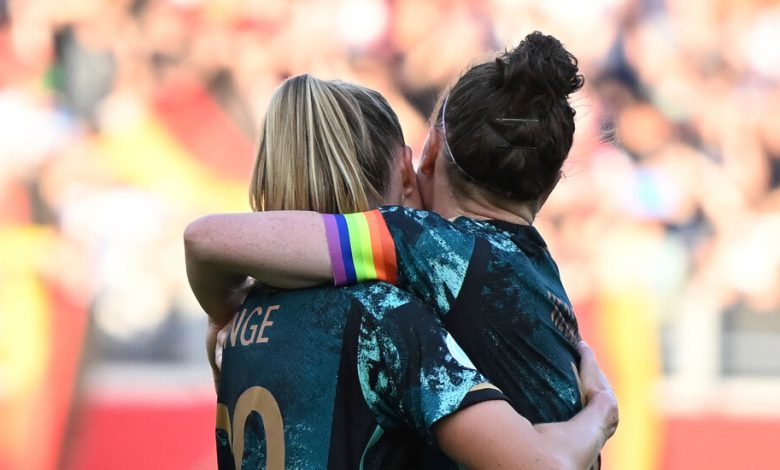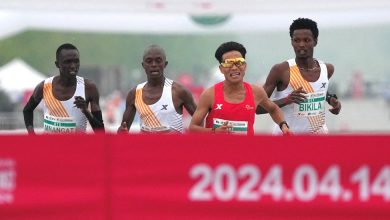FIFA Will Allow Rainbow Armbands at Women’s World Cup

UPDATE, Friday, June 30: FIFA on Friday confirmed the rules for the armbands team captains can wear at the Women’s World Cup described in this article. One design includes a rainbow-colored design, but FIFA took pains to differentiate its from a familiar pride design some teams have worn for years. This article has been updated to note the approved slogans and designs.
FIFA will allow teams to wear rainbow-colored armbands that promote inclusivity at this year’s Women’s World Cup, reversing a policy that specifically outlawed a similar armband featuring the same colors at the men’s World Cup in Qatar last year.
In November, FIFA threatened teams and their captains with serious punishments in its effort to silence a long-planned anti-discrimination statement only hours before the start of the World Cup, leading to a breakdown in relations between soccer’s governing body and several competing nations.
But this week, after months of discussions between soccer’s leaders and national federations that are intent on allowing their players to highlight causes that are important to them on women’s soccer’s biggest stage, FIFA sent a letter outlining its armband rules for the 32 teams that will participate in the tournament.
The participating national soccer federations received the letter on Friday, around the time FIFA announced its plans on social media.
The agreement that appears to have been reached will allow captains of teams that want to participate in efforts to promote inclusivity — a FIFA-approved message scheduled to be the theme for the first round of games — to wear armbands featuring rainbow colors during matches at the monthlong event in Australia and New Zealand.
The single multi-colored design, similar to the so-called One Love version banned in Qatar, would be reminiscent in its colors to the well-known flag that serves as a symbol of L.G.B.T.Q. pride, but purposely not identical to it.
FIFA will allow individual nations to decide whether or not to wear the rainbow armband, and it will offer captains and teams who opt out choices highlighting other social justice words and phrases on a solid blue armband, or a neutral FIFA armband bearing the message “Football Unites the World.”
In the tournament’s later rounds, FIFA and the national teams will promote themes beyond inclusivity like gender equality, peace, education and violence against women, among others. The co-host Australia had pushed for an armband that highlights the rights of Indigenous citizens; that was also approved. (In a related decision, FIFA plans to hang Indigenous flags at World Cup stadiums in Australia and New Zealand in a show of support for an issue of particular interest to both host nations.)
Getting to a consensus on armbands has not been easy. At one stage of the months of sometimes contentious talks between FIFA and the teams, there was a growing sense that the rainbow-colored armbands sought by supporters of the inclusivity campaign would not be permitted. As recently as March, a top German official said her team had been told directly by FIFA that the rainbow armbands its players have worn for years would not be allowed at the Women’s World Cup.
Players on several Women’s World Cup teams have spoken about their intention to highlight support for the L.G.B.T.Q. community at the monthlong tournament, which will feature dozens of players who are gay. A handful of teams already wear rainbow armbands in many of their matches, and other players and teams have used armbands and wristbands in the past to highlight issues such as sexual abuse, gender equality and gun control.
FIFA may be just as eager to take the issue off the table after the pushback, public protests and online scorn it received over its ban on rainbow armbands in Qatar, a country where homosexuality is outlawed.
“We all went through a learning process,” FIFA’s president, Gianni Infantino, said of the armband battle during a visit to London in March. “What we will try to do better this time is to search for a dialogue with everyone involved — the captains, the federations, the players, FIFA — to capture the different sensitivities and see what can be done in order to express a position, a value or a feeling that somebody has in a positive way, without hurting anyone else.
“We are looking for dialogue and we will have a solution in place well before the Women’s World Cup,” he predicted at the time. The tournament opens on July 20.



